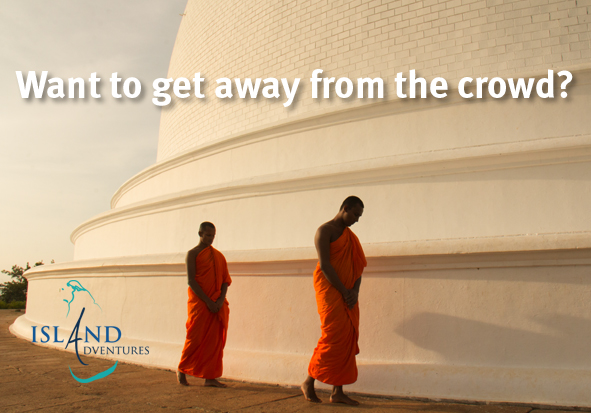TRAVEL
Surrey’s Premier Lifestyle Magazine
On board Royal Rajasthan on Wheels
The seven night and eight day journey of the Royal Rajasthan on Wheels train goes to some of the most sought-after places in India, including Jaipur, Sawai Madhopur, Jodhpur, Udaipur, Chittorgarh, Agra, Khajuraho and Varanasi. Subhasish Chakraborty stepped on board for the ride.
Photo copyright: Rajasthan Tourism
Photo copyright: Rajasthan Tourism
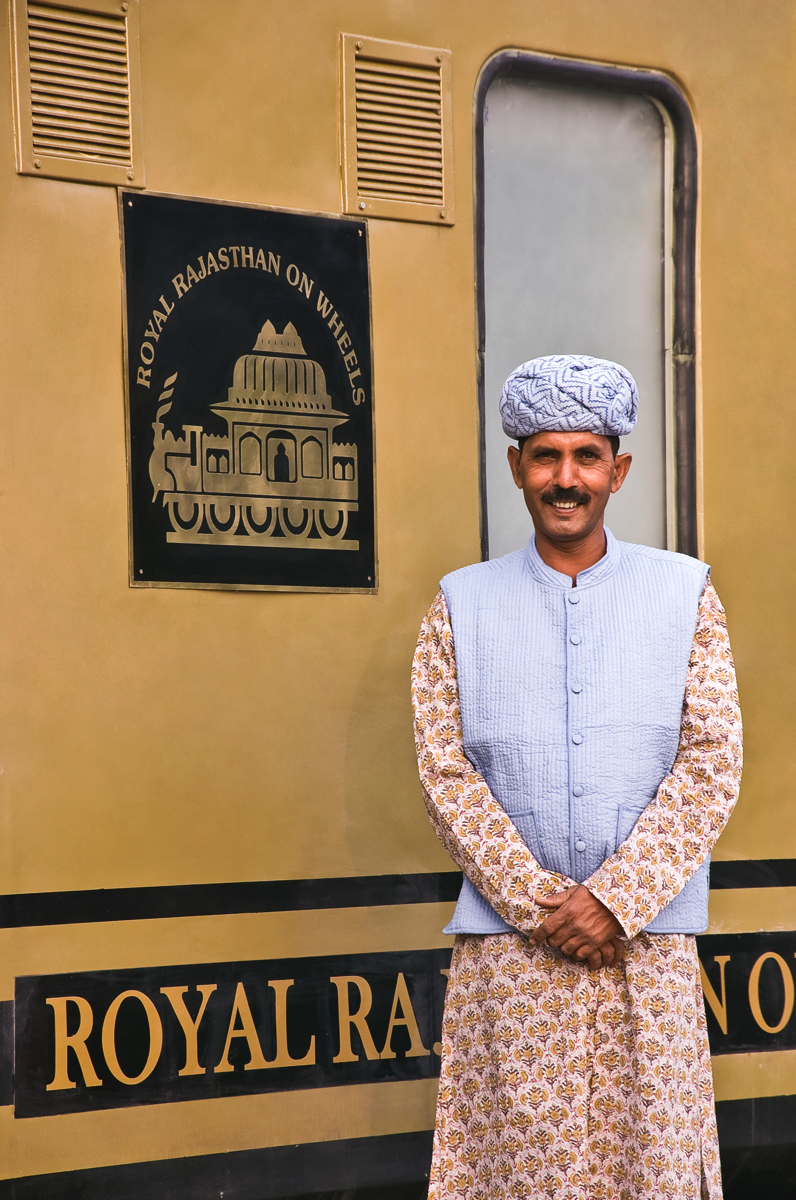
It’s often said India is not a country but a continent. The ‘Incredible India’ marketing blitz launched by the Ministry of Tourism has drawn a worldwide audience that increasingly opts for luxury train travel as a way to discover India’s enormous variety and diversity.
Recently, a team of 20 French archaeologists arrived on a fortnight’s visit to attend an international seminar at New Delhi conducted by the Government of Rajasthan. I was entrusted with the task of guiding the group during its stay.
At the end of the seminar, the Department of Tourism, Government of Rajasthan, offered the entire group a complimentary week long journey aboard the luxurious Royal Rajasthan on Wheels train.
The state of Rajasthan is the land of royalty. Its walled cities, impregnable forts and dazzling palaces are an impressive reminder of its rich, virile past. Incredible legends of a bygone era evidence the romance and heroism of the battle scarred Rajput warriors who reigned supreme with a gusto and fanfare unparalleled elsewhere in India.
The trip is a highly priced tour package, so it wasn’t surprising to see the majority of guests on board were overseas visitors from affluent western countries, with the odd NRI (non-resident Indian) in between on a mission to rediscover their native country.
The unbelievable success of the ‘Palace on Wheels’ train launched in 1982, and the burgeoning demand of the discerning international traveller to visit Rajasthan on a royal carriage, has prompted the Rajasthan Tourism Development Corporation to come up with an additional royal carriage in the form of the Royal Rajasthan on Wheels.
As the train chugged off from New Delhi’s Safdarjung Railway Station, the whistle blew its final salutation to all that was royal and grand about India. The train with its thirteen royal coaches offers all the indulgences one would associate with the erstwhile Indian royalty. Apart from passenger coaches, the train has an exclusive conferencing coach and coaches that serve as royal restaurants. The Spa coach is intended for those inclined to rejuvenate their senses with the most relaxing of natural therapies.
Recently, a team of 20 French archaeologists arrived on a fortnight’s visit to attend an international seminar at New Delhi conducted by the Government of Rajasthan. I was entrusted with the task of guiding the group during its stay.
At the end of the seminar, the Department of Tourism, Government of Rajasthan, offered the entire group a complimentary week long journey aboard the luxurious Royal Rajasthan on Wheels train.
The state of Rajasthan is the land of royalty. Its walled cities, impregnable forts and dazzling palaces are an impressive reminder of its rich, virile past. Incredible legends of a bygone era evidence the romance and heroism of the battle scarred Rajput warriors who reigned supreme with a gusto and fanfare unparalleled elsewhere in India.
The trip is a highly priced tour package, so it wasn’t surprising to see the majority of guests on board were overseas visitors from affluent western countries, with the odd NRI (non-resident Indian) in between on a mission to rediscover their native country.
The unbelievable success of the ‘Palace on Wheels’ train launched in 1982, and the burgeoning demand of the discerning international traveller to visit Rajasthan on a royal carriage, has prompted the Rajasthan Tourism Development Corporation to come up with an additional royal carriage in the form of the Royal Rajasthan on Wheels.
As the train chugged off from New Delhi’s Safdarjung Railway Station, the whistle blew its final salutation to all that was royal and grand about India. The train with its thirteen royal coaches offers all the indulgences one would associate with the erstwhile Indian royalty. Apart from passenger coaches, the train has an exclusive conferencing coach and coaches that serve as royal restaurants. The Spa coach is intended for those inclined to rejuvenate their senses with the most relaxing of natural therapies.
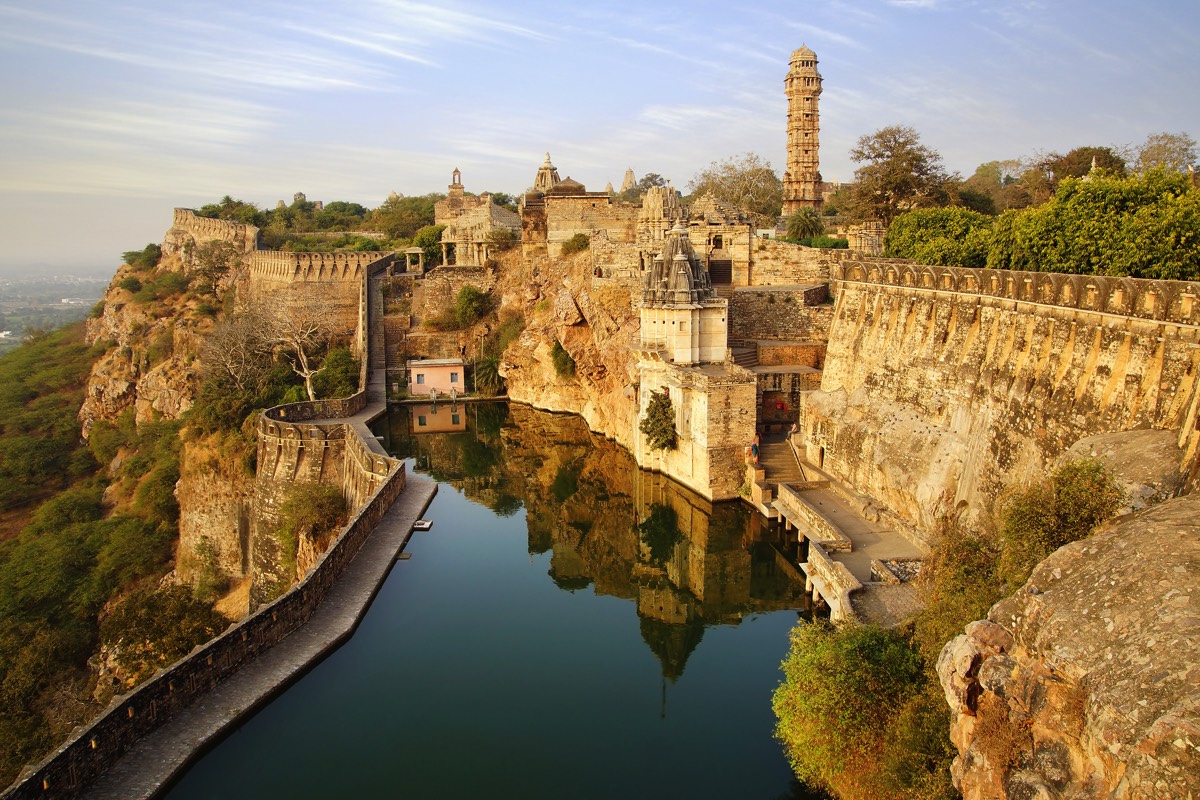
Chittorgarh Fort Photo copyright: Plotnikov | Dreamstime.com
We were given a warm traditional welcome after which I went about exploring the opulence on offer.
I stopped by the elegant bar and had a sip of my favourite tipple, ventured into the exclusive Spa and gymnasium, and returned stupefied to my coach, bedazzled by the train’s regal aura.
My frenetic exploration of the various coaches made one curious bellboy (khidmatgar) laugh excitedly at me and I thought it prudent to accept his help as a guide. Vishal, working in this royal carriage since its inception, made me aware of all the facets of this one-of-a-kind luxury train, such as the ethnic style interiors, as well as the architectural content of the royally designed coaches. Each coach is aptly named after some of the finest historical places in Rajasthan.
During my animated conversation with Vishal, the affable khidmatgar disclosed that the luxury Royal Rajasthan train was a joint endeavour of the Rajasthan Tourism Development Corporation Ltd and the Indian Railways. This train is ranked amongst the best luxury trains in the world and is up there with the likes of the Orient Express, the Eastern and Oriental of South East Asia and the Blue Train of South Africa.
Our first halt was Jodhpur. This marvellous city stands at the edge of the Thar Desert and is conspicuous by its colossal fort that rises in the middle of the town dominating the cityscape. Our group was urged to visit the fort by the loyal khidmatgars from where we basked in the uninterrupted sight of the city. Since we had enough time on our hands, we went on a walking tour of the Old City, a fascinating jumble of winding streets in which to wander.
Post lunch, the train chugged off for Udaipur, which is amongst the most romantic of places in the desert state of Rajasthan with its magnificent palaces, Lake Pichola, Fateh Sagar Lake and the gorgeously landscaped Saheliyon Ki Bari. We were mesmerised by the Lake Palace, now converted into a luxury heritage hotel. We embarked on a leisurely sightseeing tour of the Old City which is bounded by the remains of a city wall and sprawls away on the east side of Lake Pichola.
Back on board and leaving behind the romantic vistas of Udaipur, we were now on our way to Chittorgarh. By the time we reached the city, it was around 4pm and we could see the red sun dipping across the far horizon. Without wasting any time, we hopped in our coach to visit the magnificent hilltop Chittorgarh fort.
This impregnable fort is located on a 700-acre site on top of a 180 metre high hill which rises abruptly from surrounding plains. Once inside, many attractions await such as the palace of Rana Khumba, Fateh Prakash Palace, the colossal Tower of Victory, the Gaumukh Reservoir, Padmini’s Palace and the Tower of Fame.
I stopped by the elegant bar and had a sip of my favourite tipple, ventured into the exclusive Spa and gymnasium, and returned stupefied to my coach, bedazzled by the train’s regal aura.
My frenetic exploration of the various coaches made one curious bellboy (khidmatgar) laugh excitedly at me and I thought it prudent to accept his help as a guide. Vishal, working in this royal carriage since its inception, made me aware of all the facets of this one-of-a-kind luxury train, such as the ethnic style interiors, as well as the architectural content of the royally designed coaches. Each coach is aptly named after some of the finest historical places in Rajasthan.
During my animated conversation with Vishal, the affable khidmatgar disclosed that the luxury Royal Rajasthan train was a joint endeavour of the Rajasthan Tourism Development Corporation Ltd and the Indian Railways. This train is ranked amongst the best luxury trains in the world and is up there with the likes of the Orient Express, the Eastern and Oriental of South East Asia and the Blue Train of South Africa.
Our first halt was Jodhpur. This marvellous city stands at the edge of the Thar Desert and is conspicuous by its colossal fort that rises in the middle of the town dominating the cityscape. Our group was urged to visit the fort by the loyal khidmatgars from where we basked in the uninterrupted sight of the city. Since we had enough time on our hands, we went on a walking tour of the Old City, a fascinating jumble of winding streets in which to wander.
Post lunch, the train chugged off for Udaipur, which is amongst the most romantic of places in the desert state of Rajasthan with its magnificent palaces, Lake Pichola, Fateh Sagar Lake and the gorgeously landscaped Saheliyon Ki Bari. We were mesmerised by the Lake Palace, now converted into a luxury heritage hotel. We embarked on a leisurely sightseeing tour of the Old City which is bounded by the remains of a city wall and sprawls away on the east side of Lake Pichola.
Back on board and leaving behind the romantic vistas of Udaipur, we were now on our way to Chittorgarh. By the time we reached the city, it was around 4pm and we could see the red sun dipping across the far horizon. Without wasting any time, we hopped in our coach to visit the magnificent hilltop Chittorgarh fort.
This impregnable fort is located on a 700-acre site on top of a 180 metre high hill which rises abruptly from surrounding plains. Once inside, many attractions await such as the palace of Rana Khumba, Fateh Prakash Palace, the colossal Tower of Victory, the Gaumukh Reservoir, Padmini’s Palace and the Tower of Fame.
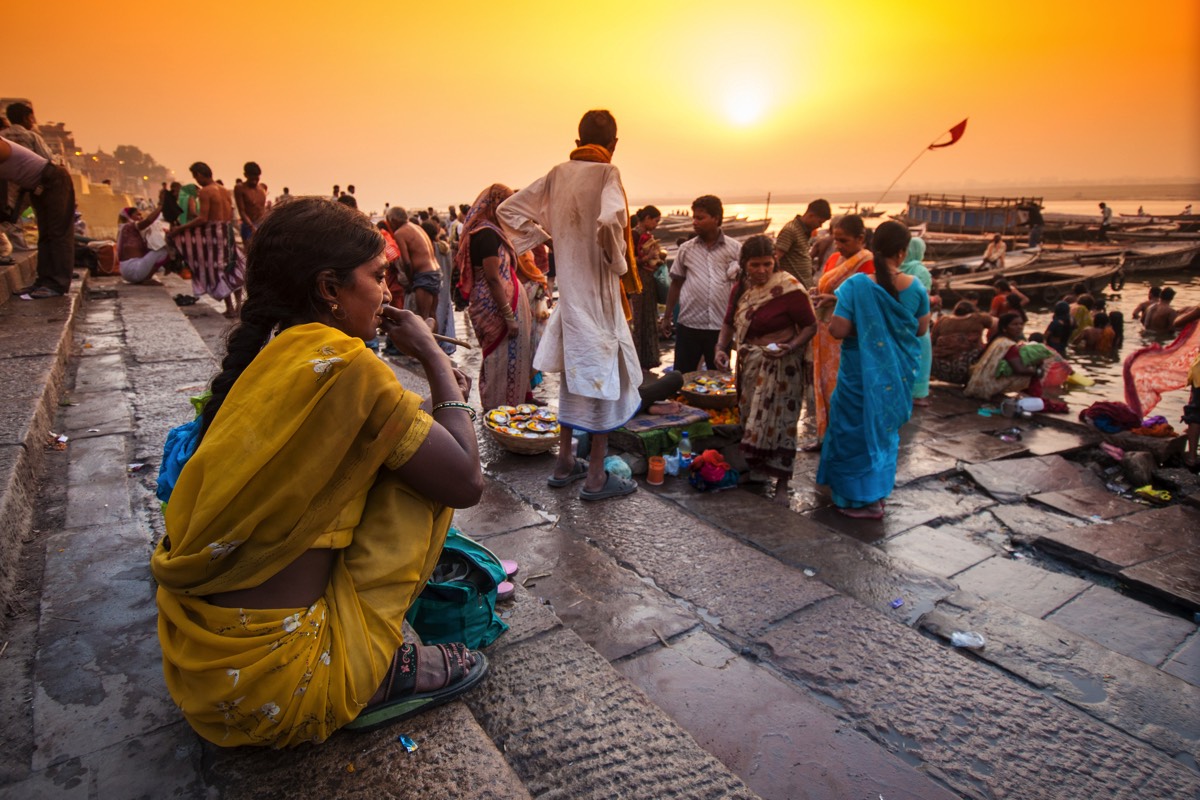
Locals live their morning life, Ganga river Photo copyright: Filmlandscape | dreamstime.com
More surprises awaited as we were told by one of the khidmatgars that an informal tea party was being arranged inside the fort. With the evening sun setting and high voltage lights illuminating the fort, the experience was ethereal; my French guests loved the romantic ambience.
On day four we arrived at Sawai Madhopur early in the morning and headed for the world famous Ranthambore National Park. To come face to face with big cats needs luck and visitors are fortunate to spot one in a day’s safari. To track tigers, someone who knows the topography and also possesses the skill to interpret telltale signs in the form of pugmarks is needed. Our naturalist, Neeraj, who knew the entire Ranthambore landscape, had been informed that a tigress had given birth to a cub at Zone No 2 near a watering hole and was recuperating.
Off we went ‘zip-zap-zoom’ in our four-wheel drive and parked near the watering hole but, with no sign of the tigress and her newborn cub, we were becoming restless. Finally, Neeraj spotted the tigress’s tail waving by the side of a thick bushy grove. We could view only the tail, nothing much else. The driver decided to take a deft left turn and there they were – the tigress licking her newborn cub in such a tender manner as only a mother could. For my French guests, it was a lifetime’s experience and the scene was straight out of a National Geographic television episode.
After a thrilling wildlife safari, our group assembled on board the royal carriage and had an impromptu breakfast. At the stroke of 9.30am it was time to move on to Jaipur – the capital city of Rajasthan.
We travelled in an air-conditioned coach to some of the most popular tourist sites of this incredible city. The Old City appealed especially to the French guests and they were amazed by the sheer architectural grandeur of the walled city. After a fascinating bout of sightseeing, we settled for a sumptuous lunch at Café Amber and post lunch visited landmarks such as the Hawa Mahal, City Palace, the Observatory, Central Museum and the gorgeous Ram Niwas Garden. Some of the guests undertook a walking tour of the city’s principle shopping district – Johari Bazzar – which was buzzing with activity.
Returning to the train, we now left behind the regal grandeur of Rajasthan on our way to explore India’s most exotic temple town of Khajuraho. After an overnight’s train journey, we arrived at around 8am and post breakfast went on a tour of the town.
As a first time visitor to Khajuraho what strikes most is the temple architecture (Indo-Aryan). But it’s the decoration with which the temples are so liberally embellished that has made Khajuraho so famous. The temple sculptors show many aspects of Indian life that prevailed at least a thousand years ago: gods and goddesses, warriors and musicians, animals, real and mythological. But two elements appear over and over again and in greater detail than anything else: women and sex.
Stone figures of ‘Apsaras’ or celestial maidens appear on every temple. They pout and pose for all the world like Playboy models posing for the camera – a whole Kama Sutra of positions. Khajuraho is stunning because to build so many temples of such monumental size in just 100 years must have required a huge amount of effort and manpower.
After a day’s tour of Khajuraho, we were feeling a little tired and so settled for an onboard dinner. We were informed that our next stop would be Varanasi – the spiritual capital of India. It is the cauldron of Indian spiritual ethos and one of the oldest existing cities in the world. The entire city is steeped in spirituality and mythology and a visit to Varanasi is considered to be the ultimate in terms of pilgrimage.
Varanasi’s principal attraction is the long string of bathing ghats which line the bank of the holy Ganges river. By 6am we were at Dasaswamedh Ghat. We were mesmerised by the sight of pilgrims taking their holy dip in the river as the city gradually came alive. For my French guests it was mystifying to see the sight of women bathing discreetly in their saris, the younger going through their yoga exercises, the Brahmin priest offering blessings for a price and the ever present beggars giving others an opportunity to do their ‘Karma’ some good.
On day four we arrived at Sawai Madhopur early in the morning and headed for the world famous Ranthambore National Park. To come face to face with big cats needs luck and visitors are fortunate to spot one in a day’s safari. To track tigers, someone who knows the topography and also possesses the skill to interpret telltale signs in the form of pugmarks is needed. Our naturalist, Neeraj, who knew the entire Ranthambore landscape, had been informed that a tigress had given birth to a cub at Zone No 2 near a watering hole and was recuperating.
Off we went ‘zip-zap-zoom’ in our four-wheel drive and parked near the watering hole but, with no sign of the tigress and her newborn cub, we were becoming restless. Finally, Neeraj spotted the tigress’s tail waving by the side of a thick bushy grove. We could view only the tail, nothing much else. The driver decided to take a deft left turn and there they were – the tigress licking her newborn cub in such a tender manner as only a mother could. For my French guests, it was a lifetime’s experience and the scene was straight out of a National Geographic television episode.
After a thrilling wildlife safari, our group assembled on board the royal carriage and had an impromptu breakfast. At the stroke of 9.30am it was time to move on to Jaipur – the capital city of Rajasthan.
We travelled in an air-conditioned coach to some of the most popular tourist sites of this incredible city. The Old City appealed especially to the French guests and they were amazed by the sheer architectural grandeur of the walled city. After a fascinating bout of sightseeing, we settled for a sumptuous lunch at Café Amber and post lunch visited landmarks such as the Hawa Mahal, City Palace, the Observatory, Central Museum and the gorgeous Ram Niwas Garden. Some of the guests undertook a walking tour of the city’s principle shopping district – Johari Bazzar – which was buzzing with activity.
Returning to the train, we now left behind the regal grandeur of Rajasthan on our way to explore India’s most exotic temple town of Khajuraho. After an overnight’s train journey, we arrived at around 8am and post breakfast went on a tour of the town.
As a first time visitor to Khajuraho what strikes most is the temple architecture (Indo-Aryan). But it’s the decoration with which the temples are so liberally embellished that has made Khajuraho so famous. The temple sculptors show many aspects of Indian life that prevailed at least a thousand years ago: gods and goddesses, warriors and musicians, animals, real and mythological. But two elements appear over and over again and in greater detail than anything else: women and sex.
Stone figures of ‘Apsaras’ or celestial maidens appear on every temple. They pout and pose for all the world like Playboy models posing for the camera – a whole Kama Sutra of positions. Khajuraho is stunning because to build so many temples of such monumental size in just 100 years must have required a huge amount of effort and manpower.
After a day’s tour of Khajuraho, we were feeling a little tired and so settled for an onboard dinner. We were informed that our next stop would be Varanasi – the spiritual capital of India. It is the cauldron of Indian spiritual ethos and one of the oldest existing cities in the world. The entire city is steeped in spirituality and mythology and a visit to Varanasi is considered to be the ultimate in terms of pilgrimage.
Varanasi’s principal attraction is the long string of bathing ghats which line the bank of the holy Ganges river. By 6am we were at Dasaswamedh Ghat. We were mesmerised by the sight of pilgrims taking their holy dip in the river as the city gradually came alive. For my French guests it was mystifying to see the sight of women bathing discreetly in their saris, the younger going through their yoga exercises, the Brahmin priest offering blessings for a price and the ever present beggars giving others an opportunity to do their ‘Karma’ some good.
After breakfast onboard the royal carriage, we were off to Sarnath – one of the major Buddhist centres, just a ten kilometre drive from Varanasi. After attaining enlightenment, it was here in Sarnath that the Buddha came to preach his message of the middle way to reach Nirvana. There are a number of monasteries here and must visit sites include the Dhamekh Stupa (500AD), Dharmarajika Stupa, the Ashoka Pillar, the Archaeological Museum (storehouse of figures and sculptures from the ninth to twelfth centuries), as well as the Maha Bodhi Society Temple.
For the evening, we returned to Varanasi in time for the Ganga Aarti where the whole city enters into worshipping mode and the tolling of temple bells herald the evening Aarti on the banks of the Ganges. Women, visitors and all salvation seekers line up at the Dasaswamedh Ghat to light their butter lamps and release them on the tranquil Ganges river. Within half an hour, the entire scene takes on a truly divine character. Imagine the surreal sight of thousands of flickering butter lamps slowly wending their way into the river.
Our penultimate halt was at Agra and there is only one reason why visitors to India halt at Agra – to marvel at the Taj Mahal, one of the wonders of the world. It was a very special moment for my French guests as they stood in front of the world’s most extravagant monument ever built for love. I was lucky to come across a local guide who could converse fluently in French and requested that he offer his interpretational services for a fee. This arrangement was much appreciated by the French guests as they found all their answers from the well-informed guide with regard to the history and architectural splendour of the Taj Mahal.
We were now approaching the end of what had been a memorable odyssey through one of India’s most colourful and exotic regions and it seemed natural for us to discuss our stupendous regal experiences of the past week in the train’s well stocked bar. Dinner was to be an intimate affair and the resident chef had come up with the most exotic Rajasthani spread at the fervent appeal of the French guests.
In a week we had travelled and shared the discovery of some of India’s rich past and diverse culture, fascinating palaces, impregnable forts and stunning architectural facades, and now had a unique bond. Today, six months since we undertook that magical royal train journey, many of us still keep in touch chatting and reminiscing about that memorable journey on wheels.
A tour onboard the Royal Rajasthan on Wheels is one of the world’s most unique train journeys. Are you up for the ride?
For the evening, we returned to Varanasi in time for the Ganga Aarti where the whole city enters into worshipping mode and the tolling of temple bells herald the evening Aarti on the banks of the Ganges. Women, visitors and all salvation seekers line up at the Dasaswamedh Ghat to light their butter lamps and release them on the tranquil Ganges river. Within half an hour, the entire scene takes on a truly divine character. Imagine the surreal sight of thousands of flickering butter lamps slowly wending their way into the river.
Our penultimate halt was at Agra and there is only one reason why visitors to India halt at Agra – to marvel at the Taj Mahal, one of the wonders of the world. It was a very special moment for my French guests as they stood in front of the world’s most extravagant monument ever built for love. I was lucky to come across a local guide who could converse fluently in French and requested that he offer his interpretational services for a fee. This arrangement was much appreciated by the French guests as they found all their answers from the well-informed guide with regard to the history and architectural splendour of the Taj Mahal.
We were now approaching the end of what had been a memorable odyssey through one of India’s most colourful and exotic regions and it seemed natural for us to discuss our stupendous regal experiences of the past week in the train’s well stocked bar. Dinner was to be an intimate affair and the resident chef had come up with the most exotic Rajasthani spread at the fervent appeal of the French guests.
In a week we had travelled and shared the discovery of some of India’s rich past and diverse culture, fascinating palaces, impregnable forts and stunning architectural facades, and now had a unique bond. Today, six months since we undertook that magical royal train journey, many of us still keep in touch chatting and reminiscing about that memorable journey on wheels.
A tour onboard the Royal Rajasthan on Wheels is one of the world’s most unique train journeys. Are you up for the ride?
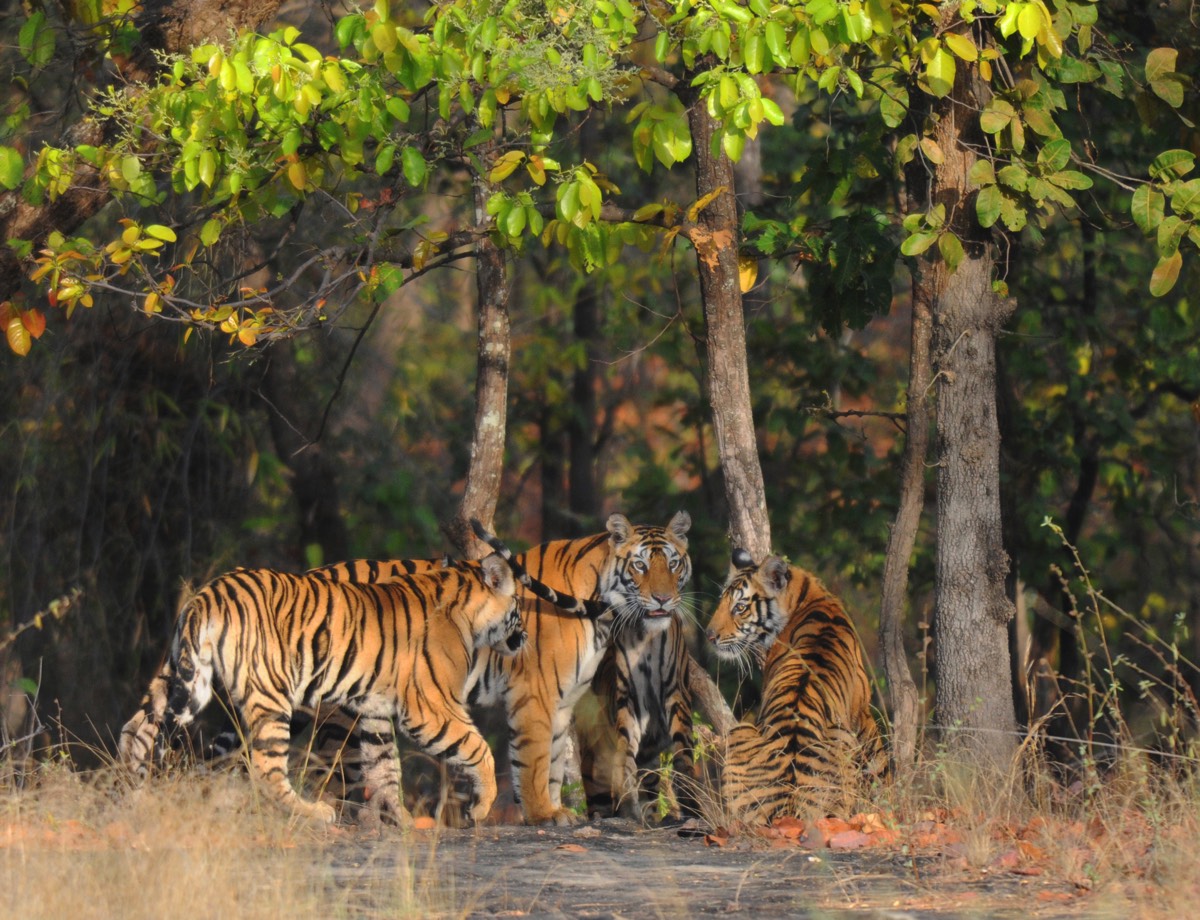
Photo copyright: Shailin Ramji
essence info
Royal Rajasthan on WheelsThe train departs from Safdarjung Railway Station, New Delhi between the months of October to March every year.
Website: www.royalsrajasthanonwheels.com
Telephone: +91 11 23383837, 23386069, 23381884
Email: powrtdc@yahoo.com, dilhi@rtdc.in
To come face to face with big cats needs luck and visitors are fortunate to spot one in a day’s safari. To track tigers, someone who knows the topography and also possesses the skill to interpret telltale signs in the form of pugmarks is needed.

